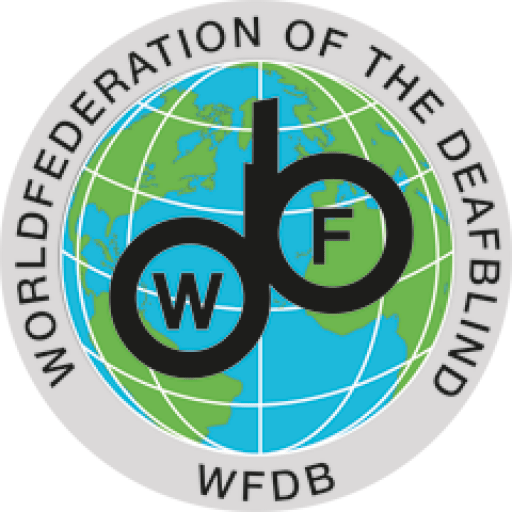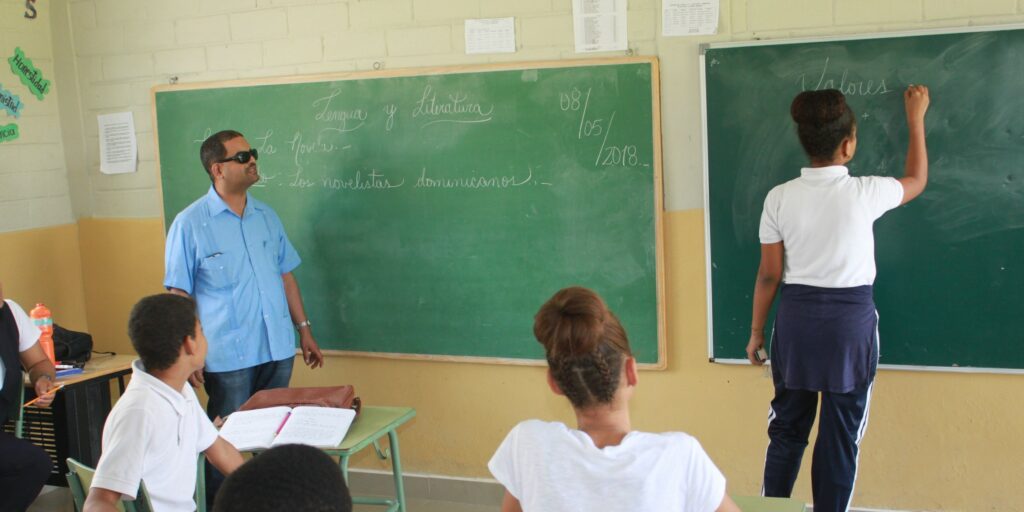“After working for 20 years as director of services of the unit for blind people at the National Library of the Dominican Republic, I applied alongside other professionals without disabilities to become a teacher for secondary level students. It was the first time that a person with deafblindness participated in such an application process. I got 85 points out of 100 as a result.
“In October 2015, I started my work as a Spanish and literature teacher with students of 1, 2, and 3 grade at a school named Dr Julio Abreu Cuello in my city (Monte Plata). It was a surprise and bewildering for the staff when I started; however, my interaction with the students and good relationship with the staff led to my fast inclusion within the teachers group.
“When I got to know that I successfully passed the application process and got a teaching position, I felt a mix of satisfaction and uncertainty. I asked myself: How will I have good communication with students without disabilities? What will be the attitude of my colleagues? Which strategies will I use so that my disability does not interfere with education, work and the relationship with the students?
“In an initial meeting with the director and teachers in the school, I explained the nature and characteristics of deafblindness and said that the disability did not stop me from being a cultural manager, radio, television and written newspaper journalist. I felt that I had the capacity and motivation to take on the challenge of starting as a teacher of teenage students without disabilities, to whom I could also become a concrete example of overcoming barriers and negative attitudes faced by persons with disabilities.
“At the beginning of the school year I explained to the students in a clear and simple way that I am a person with deafblindness, asking them to participate in class by speaking clearly and at a high volume. I also asked them to commit to being collaborative with me in the activities that are visual, such as checklists, supervision and discipline, management of non-accessible technology, and the use of the board. As a result, I got their active collaboration in a natural and spontaneous way.
“The main barriers were actually managing a group of 30 students, planning work in didactic units, managing class resources and mobility around the school. I agreed with the director and coordinator about working with groups of 15 students at a time, even if I had to duplicate my work. For planning, resource management and mobility, I got the support of my colleagues, my students and the administrative staff, who all contributed to my accommodation.
“To become a teacher required me to learn a lot, additional effort, creativity and imagination to achieve better communication, which in turn increased my capacities, self-esteem, autonomy, social relationships and security.
“The year after, I was assigned to another school named Secundario Madre Ascensión Nicol, and there, inclusion was even faster and easier, and became deeper and deeper.
“I think that working in the wider community environment, with the students, families and colleagues, allowed me to show them all the contribution that persons with deafblindness can make. Showing our capacities in daily action means more than presentations and speeches at conferences and media.”

